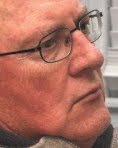

Fig. 1 shows a schematic of a multiple feedback type 2nd order band pass filter. Click on the figures for a larger view. For a complete description, transfer function and other information you can refer to Texas Instrument Literature Number SLOA088, "Active Filter Design Techniques". In this post we will show the equations and information that is usually needed for a practical design.
To start with the design engineer should know or specify the center frequency, the bandwidth, the Q of the filter, and the gain at the center frequency. This circuit is very good for this application because of its low parts count and the ability to separately adjust the center frequency, the gain, and the Q of the filter. Note that Q is always the ratio of center frequency to bandwidth for a bandpass filter.
Q = Fm / (F2 - F1)
where Fm is the center frequency, F2 is the -3db high side cut-off and F1 is the -3db cut off on the low frequency side of the response curve. See the simulation response curve above of the filter we will design here.
Although the center frequency is specified, it can be adjusted according to its relation to the component values:
Fm = (1 / (2 * Pi * C)) * ( ( R1 + R3) / (R1 * R2 * R3 ) )^0.5
Note that the actual center frequency is inversely proportional to the value of the capacitors C.
The gain of the filter at the center frequency is
Ko = R2 / (2 * R1)
The Q is related to the center frequency as
Q = Pi * Fm * R2 * C
and the bandwidth is
BW = 1 / ( Pi * R2 * C )
Both capacitors in the circuit are usually set to the same value.
To design the filter we pick both capacitors to be equal to a practical value. Then since we have already picked the center frequency Fm, the Q, and the gain Ko at Fm, we can now calculate the three resistors values R1, R2, and R3 shown in Fig. 1.
R2 = Q / ( Pi * Fm * C )
R1 = R2 / ( 2 * Ko )
R3 = Ko * R1 / ( 2 * Q^2 + Ko )
Note that Ko is the absolute value of the gain even though the op-amp is an inverting configuration.
A design example of a fairly high Q MFB filter is as follows:
Fm = 10KHZ
Ko = 1.0
Q = 10
BW = 1000HZ
C = 0.01ufd ( set for both capacitors as a designer's choice. )
Using the above equations to calculate the resistor values we have
R2 = 31.83K
R1 = 15.92K
R3 = 79.18 ohms
I am using the exact computed resistor and capacitor values here in order to test the accuracy of the design by SPICE simulation. Fig. 1 is the actual simulation schematic.
The simulation results are shown for the AC analysis run in the plot above. The simulation provided the following results:
Upper -3db cut off frequency 10.549KHZ
Lower -3db cut off frequency 9.554KHZ
From above the band width is 995HZ. ( The design band width is 1000HZ.)
The Q is also then found to be 10.05. The design value was 10.0.
So the simulation results are within 1% of the design targets ( as long as the exact component values are used.)
With the high Q of the design, the filter is only conditionally stable in the presence of transient inputs, but for constant sine wave inputs the circuit would function according to its specifications. If a transient step is applied with a 0.1 microsecond rise-time, the circuit will ring about 1000 uS as observed at its output. If transient stability is required, a lower Q would have to be used with of course less frequency selectivity or a wider band width.







